Quant (QNT) Explained: What Is the QNT Crypto Coin?
Quant (QNT) Token Value Calculator
Current QNT Information
Current Price: $89.00 USD
Daily Trading Volume: $60,000,000
Market Cap: ~$1,200,000,000 (Estimated)
Minimum License Stake: 10,000 QNT/year
Your Investment Details
Projected Value Analysis
Enter your QNT holdings and adoption rate to see projected value.
Key Factors:
- Enterprise demand drives QNT value
- Trading volume indicates market interest
- License requirements affect token utility
- Market volatility remains a factor
Ever wondered why big banks keep talking about a “crypto bridge” that doesn’t look like a typical blockchain? The answer often lands on Quant (QNT). In this guide we’ll break down exactly what Quant is, how its Overledger network works, why the QNT token matters, and whether it’s a good fit for enterprises or curious investors.
Key Takeaways
- Quant isn’t a separate blockchain; it’s an interoperability layer called Overledger that links existing ledgers.
- The native Quant QNT token is an ERC‑20 asset on Ethereum and powers licensing, transaction fees, and token creation.
- Enterprise adoption is the core focus - banks, supply‑chain firms, and governments already use Overledger.
- Compared with Polkadot, Cosmos and Chainlink, Quant offers a higher‑level API approach without requiring protocol changes.
- Token economics (minimum 10,000 QNT for licensing) can be a barrier for small projects, but large institutions benefit from the standardized bridge.
What Is Quant (QNT)?
When you hear the name Quant (QNT) is a blockchain interoperability platform that uses the native QNT token to connect private and public ledgers. Founded in June 2018 by cybersecurity veteran Gilbert Verdian, Quant’s mission is simple: eliminate the “silo” problem that forces enterprises to pick a single blockchain and stay locked in.
Quant does this through its proprietary Overledger network, which acts as a middleware gateway rather than a new chain. Think of Overledger as a universal translator for blockchains - it lets Bitcoin talk to Ethereum, Hyperledger to Ripple, and even legacy banking systems speak the same language without rewriting their code.
Overledger: The Interoperability Engine
Overledger is a distributed ledger‑technology (DLT) gateway that provides a set of APIs and SDKs for building multi‑chain applications (MApps). The key design choice is that Overledger sits **above** existing ledgers; it does not introduce a consensus mechanism of its own. This means:
- Enterprises keep their current blockchain investments.
- Developers write code once and deploy it across multiple networks.
- Regulators can monitor cross‑chain transactions through a single compliance layer.
Overledger’s API layer connects to the underlying networks via “gateway operators” who hold a minimum amount of QNT tokens to obtain a license. The operator model ensures that secure access is controlled while still offering the flexibility of public‑type APIs.
QNT Token - The Fuel and License
QNT is an ERC‑20 token built on the Ethereum blockchain that serves as the utility token for the Quant ecosystem. As of October2025 the token trades around $89 USD with a daily volume exceeding $60million. Its primary roles are:
- Paying transaction fees for MApp operations.
- Staking for gateway operator licenses (10,000QNT per year for standard access).
- Creating multi‑chain tokens using the QRC‑20 standard.
Because the token is ERC‑20, it inherits Ethereum’s security guarantees, but its value is directly tied to enterprise demand for Overledger services. This linkage explains the price volatility noted by analysts - a sudden drop in corporate onboarding can swing the token’s market.
QRC‑20: A Multi‑Chain Token Standard
QRC‑20 is Quant’s own token standard designed for seamless deployment across multiple blockchains. Unlike Ethereum’s ERC‑20, QRC‑20 abstracts the underlying network, letting businesses launch a token once and have it recognized on Bitcoin, Ethereum, Ripple, and Hyperledger simultaneously. The drag‑and‑drop UI launched in 2023 allows non‑developers to mint tokens without writing smart‑contract code, a feature that has attracted fintech startups looking for quick proofs of concept.
Real‑World Use Cases
Quant’s enterprise focus is evident in several high‑profile pilots:
- Bank of England - a cross‑border payment proof‑of‑concept that used Overledger to settle transactions between UK and European banks without a central clearing house.
- European Investment Bank - digital bond issuance on a multi‑ledger platform, streamlining investor onboarding across jurisdictions.
- Supply‑Chain Logistics - a global freight company integrated Hyperledger Fabric for internal tracking while using Ethereum for public shipment verification, all linked through Overledger.
These deployments typically require 4-6months of integration work, reflecting the steep learning curve of mapping legacy data structures to blockchain‑compatible formats.
How Quant Stacks Up Against Competitors
| Feature | Quant (QNT) | Polkadot (DOT) | Cosmos (ATOM) | Chainlink (LINK) |
|---|---|---|---|---|
| Core Approach | API‑layer gateway, no consensus change | Relay chain with parachains | IBC protocol between zones | Oracle network for data feeds |
| Enterprise License Model | QNT staking (10kQNT/yr) | Token staking for validators | ATOM staking for zones | No licensing, pay per request |
| Supported Ledgers | Bitcoin, Ethereum, Ripple, Hyperledger, private chains | Polkadot‑compatible runtimes | Cosmos SDK‑based chains | All major chains via adapters |
| Governance Decentralization | More centralized (Quant team) | Community‑driven council | Staked‑holder voting | DAO‑centric |
| Best For | Large enterprises needing quick integration | Developers building new parachains | Projects wanting sovereign zones | DeFi apps needing off‑chain data |
The table highlights why Quant shines in regulated sectors: it works with existing chains and offers a single API, while Polkadot and Cosmos require building on their own frameworks. The trade‑off is less decentralization, which some crypto‑native projects see as a drawback.
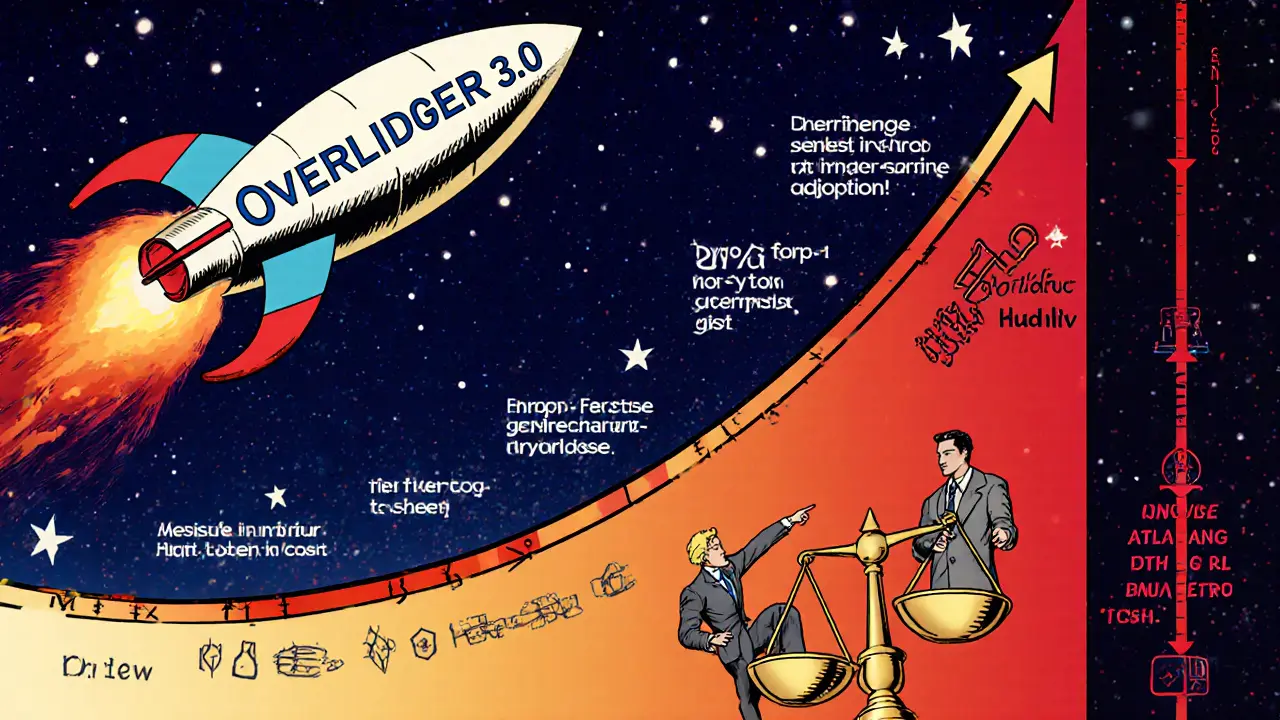
Pros and Cons
- Pros
- Enterprise‑grade security (ISO27001 certified).
- Fast time‑to‑market for cross‑chain solutions.
- Broad ledger support without protocol changes.
- Cons
- Token‑based licensing can be costly for small teams.
- Centralized governance may deter pure‑decentralization advocates.
- Limited public DeFi tooling compared to open‑source alternatives.
Token Economics and Licensing Details
To become a gateway operator, an organization must lock up at least 10,000QNT annually. This stake grants the right to route transactions, issue QRC‑20 tokens, and access premium API endpoints. The staking model creates a demand buffer for QNT, but it also ties operational budgeting to token price swings. Smaller developers can bypass the licensing fee by using third‑party gateway services, though at a higher per‑transaction cost.
Transaction fees on Overledger are paid in QNT and are calibrated per‑operation. For instance, a simple cross‑ledger query may cost 0.001QNT, while a full‑scale settlement MApp could consume 0.05QNT per transaction. These fees are modest compared to the cost of building and maintaining separate blockchain nodes.
Future Roadmap and Market Outlook
Quant’s roadmap points to Overledger3.0, slated for Q22024, which will add zero‑knowledge proof support and improve transaction finality across heterogeneous networks. Analysts at Gartner predict a 30% rise in enterprise blockchain‑interoperability adoption through 2025, with Quant positioned to capture 15‑20% of the financial‑services slice.
The broader interoperability market was valued at $6.27billion in 2022 and is projected to grow at a CAGR of 18.6% through 2030. As more Global2000 companies adopt multi‑ledger strategies (estimated 40% by 2026), demand for a turnkey bridge like Overledger should surge, bolstering QNT’s utility and, potentially, its price stability.
Frequently Asked Questions
What problem does Quant aim to solve?
Quant addresses blockchain isolation by providing a universal API layer (Overledger) that lets private and public ledgers exchange data without rewriting their underlying protocols.
Is QNT a separate blockchain?
No. QNT is an ERC‑20 token on Ethereum that fuels the Overledger network. Overledger itself does not have its own consensus mechanism.
How do enterprises obtain access to Overledger?
They become gateway operators by staking a minimum of 10,000QNT per year, which unlocks the API suite, SDKs, and the ability to issue QRC‑20 tokens.
Can I use Quant for a DeFi project?
Quant works best for regulated, enterprise‑grade use cases. While DeFi developers can technically build MApps, the token‑staking model and centralized governance make it less popular in the open‑source DeFi community.
What is the future of QNT’s price?
Price trends tie closely to enterprise adoption. If more large institutions lock up QNT for licensing, demand should rise; however, market volatility remains a risk, especially during periods of slow onboarding.
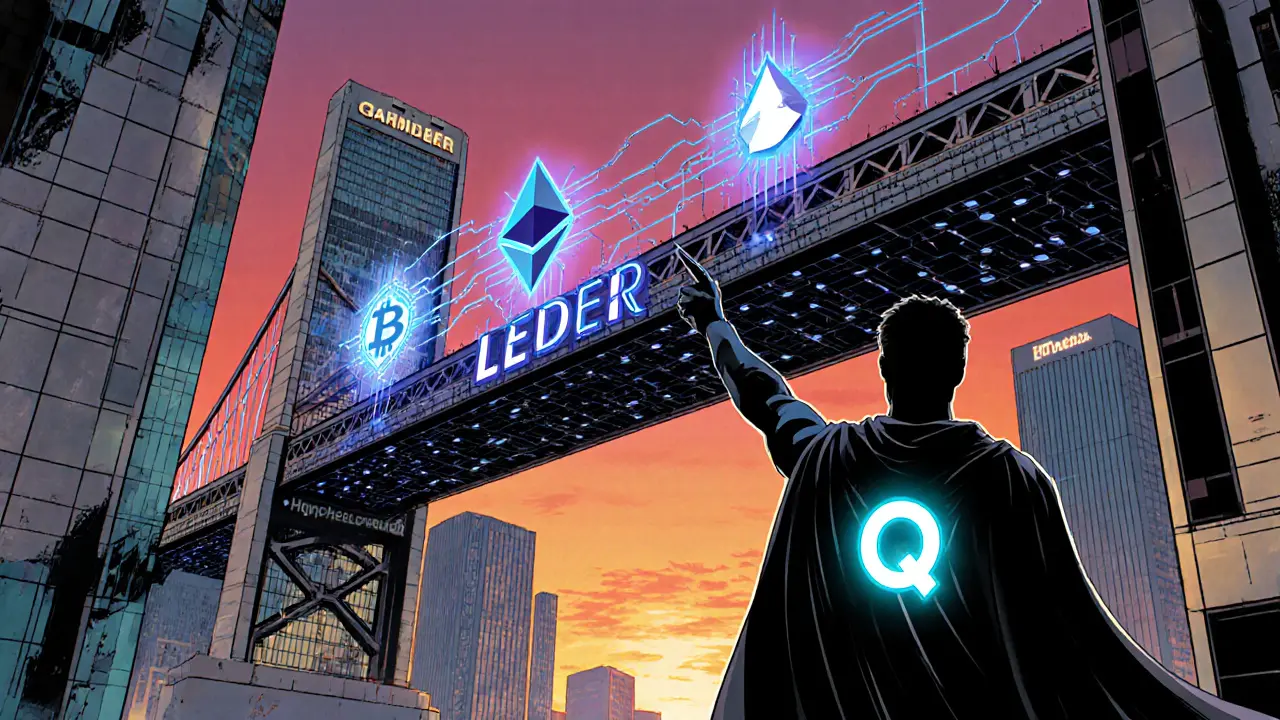
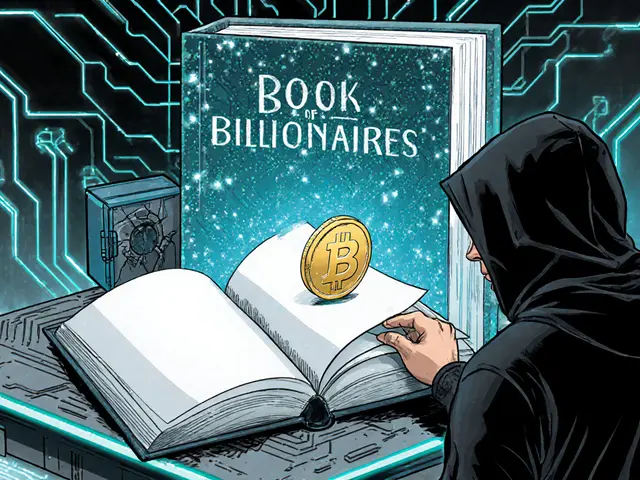


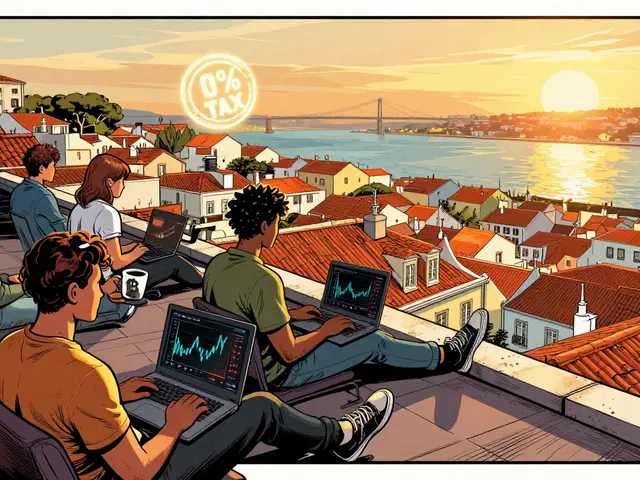
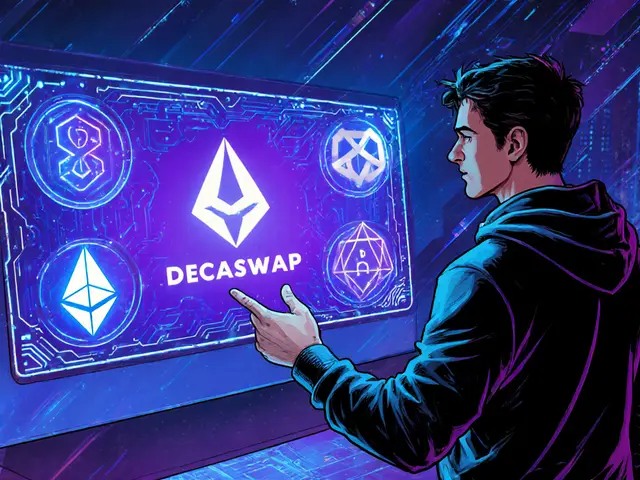
23 Comments
Ben Parker
October 11 2025Quant’s enterprise focus is insane 🚀
Daron Stenvold
October 12 2025Reading this breakdown feels like attending a grand theater performance; the stakes for QNT are dramatically high. The token’s role in licensing enterprises is nothing short of a blockbuster plot twist. I’m thrilled by the potential of 10,000 QNT per year unlocking whole ecosystems. The market cap hovering around a billion dollars signals serious interest, yet volatility still looms like an ominous fog. Overall, a spectacular showcase of blockchain ambition.
hrishchika Kumar
October 14 2025Quant (QNT) isn’t just another coin; it’s a kaleidoscope of possibilities, each hue shimmering with enterprise promise. The current price of $89 may seem modest, but when you gaze upon the $1.2 billion market cap, the canvas expands dramatically. Imagine a world where every multinational leverages Overledger to interlink disparate ledgers-this is not a distant dream, it’s a palpable reality. The daily trading volume of $60 million whispers of a vibrant liquidity pond, teeming with eager participants. Yet, beneath the surface, the requirement of staking 10,000 QNT per year for a license adds a strategic depth akin to a high‑stakes chess game. Each move, each token held, becomes a pawn, a knight, or even a queen in the grand enterprise saga. The adoption rate-currently projected at 30%-is a living pulse, beating faster as more corporations sip from the Quant fountain.
Now, let’s paint the future: as more enterprises jump aboard, the utility of QNT skyrockets, potentially turning the token into a golden ticket for cross‑chain innovation. The token’s utility is not just speculative; it’s rooted in tangible demand for interoperable solutions. With each licensing agreement, the token’s burn rate escalates, creating a deflationary pressure that could enhance scarcity. Moreover, the very architecture of Overledger, a protocol‑agnostic layer, invites a multitude of blockchain ecosystems to coexist peacefully. This harmonious dance reduces friction, slashes transaction costs, and accelerates time‑to‑market for new dApps.
However, be wary of the lurking shadows-market volatility can turn fortunes on a whim, and regulatory winds may shift unexpectedly. The token’s price could swing like a pendulum, rewarding the bold and penalizing the timid. Still, for those who believe in the transformative power of interoperability, QNT offers a compelling narrative. In sum, Quant stands as a vibrant tapestry woven with threads of technology, finance, and visionary ambition. Dive deep, stay vigilant, and you might just find yourself part of the next blockchain renaissance.
Nina Hall
October 15 2025Love the breakdown, especially the license stake part!
Manas Patil
October 16 2025The licensing model introduces a solid utility vector, effectively turning QNT into a quasi‑utility token with built‑in demand elasticity. Enterprises staking 10k QNT per annum creates a predictable burn mechanism, reinforcing scarcity dynamics. Coupled with Overledger’s protocol‑agnostic interoperability, the token’s on‑chain activity is set to surge as multi‑chain deployments scale.
Annie McCullough
October 18 2025Sure, QNT looks shiny… but remember the hype cycles 😏
Carol Fisher
October 19 2025Only real crypto warriors will stand with Quant! 🇺🇸💪
Melanie Birt
October 21 2025Great points, Daron! To add, the licensing requirement actually helps prevent token dumping, because enterprises need to hold QNT long‑term. This creates a natural price floor and aligns incentives between developers and token holders. Also, Overledger’s ability to connect permissioned and permissionless networks broadens its addressable market dramatically.
Lady Celeste
October 22 2025Numbers look nice, but it’s all hype.
Ethan Chambers
October 23 2025While the prose is eloquent, one must question whether the projected 30% adoption rate is merely wishful thinking. The ecosystem’s growth hinges on actual enterprise onboarding, not speculative optimism. Moreover, over‑reliance on a single licensing model could expose QNT to regulatory shocks. In short, the narrative feels curated rather than data‑driven.
Lena Vega
October 25 2025Insightful overview, thanks for sharing.
Mureil Stueber
October 26 2025Quant’s approach is solid: tying token utility to real‑world licensing creates genuine demand. The Overledger framework could become the backbone for cross‑chain solutions, especially as more enterprises seek interoperability. However, investors should monitor adoption metrics closely, as the token’s price is directly linked to enterprise uptake.
Emily Kondrk
October 27 2025Note the hidden agenda: QNT’s licensing could be a gateway for data harvesting by elite technocrats. The token’s utility is clever, but it also centralizes control in the hands of a few gatekeepers-watch for the backdoor.
debby martha
October 29 2025meh, looks ok
Leo McCloskey
October 30 2025Honestly!!! This article is!! informative!!! It seems like they are trying too hard to hype it!!! However, the data presented is quite decent!!!
arnab nath
November 1 2025Quant’s licensing model is a classic example of tokenomics 101; hold to earn.
Nathan Van Myall
November 2 2025The token’s price movements seem tightly coupled with enterprise announcements; watch for partnership news.
Ted Lucas
November 3 2025Exactly! 🚀 When a big firm signs on, QNT tends to pop. Keep an eye on press releases and you’ll see the price reacting almost instantly.
Jacob Moore
November 5 2025For anyone thinking about diving in, start small, track the licensing announcements, and consider the long‑term staking benefits. It’s a marathon, not a sprint.
Laura Myers
November 6 2025Whoa, super chill tip! But honestly, if you’re not ready to lock up 10k QNT, you might as well stay home.
Anjali Govind
November 8 2025I appreciate the clarity on how enterprise adoption drives demand; it makes the token’s value proposition more tangible.
Orlando Lucas
November 9 2025Philosophically, Quant invites us to contemplate the future of interconnected digital economies. If we view blockchain as a series of isolated islands, Overledger becomes the bridge-a metaphorical umbilical cord linking disparate societies. This connectivity not only enhances efficiency but also democratizes access to data. In this light, owning QNT is akin to holding a passport for the emerging multichain world. Yet, one must also reflect on the responsibility that comes with such power; centralized licensing could paradoxically re‑centralize what blockchain seeks to disperse. Thus, the token sits at a crossroads between utopian integration and potential gatekeeping.
Siddharth Murugesan
November 10 2025All this talk about bridges sounds fluffy-real‑world data shows that centralized licenses become points of surveillance. The more I dig, the more I suspect Quant is paving the way for a new data oligarchy.